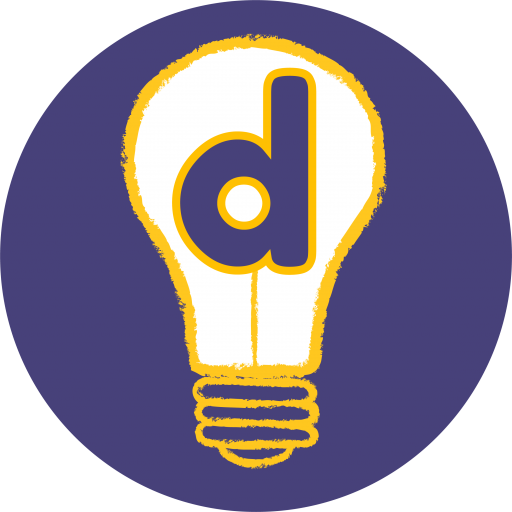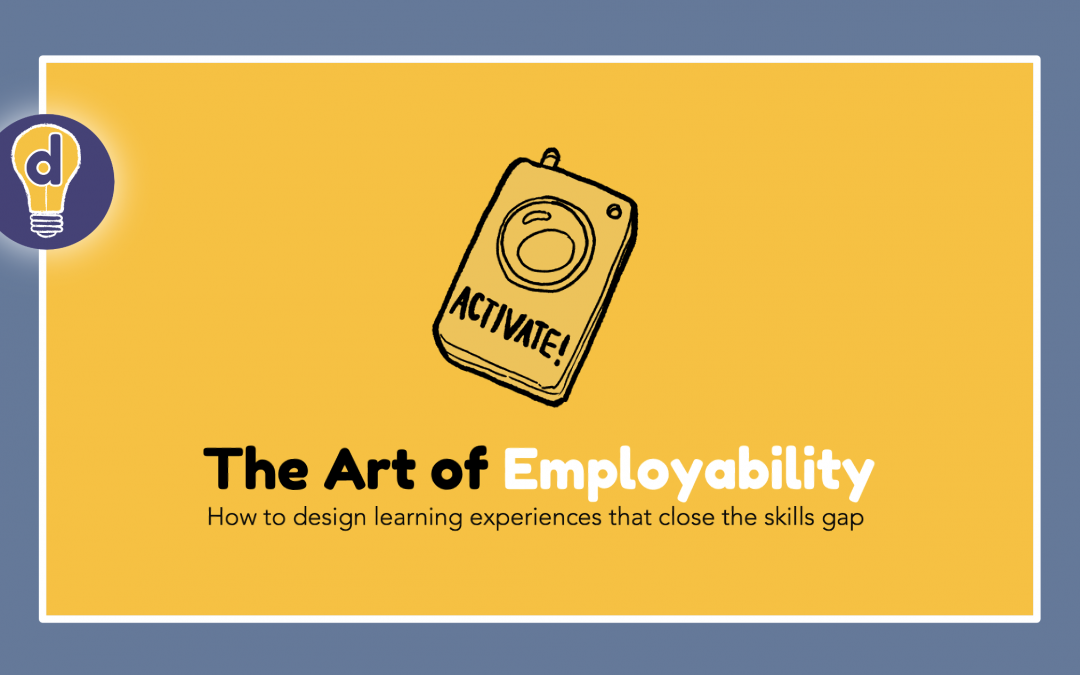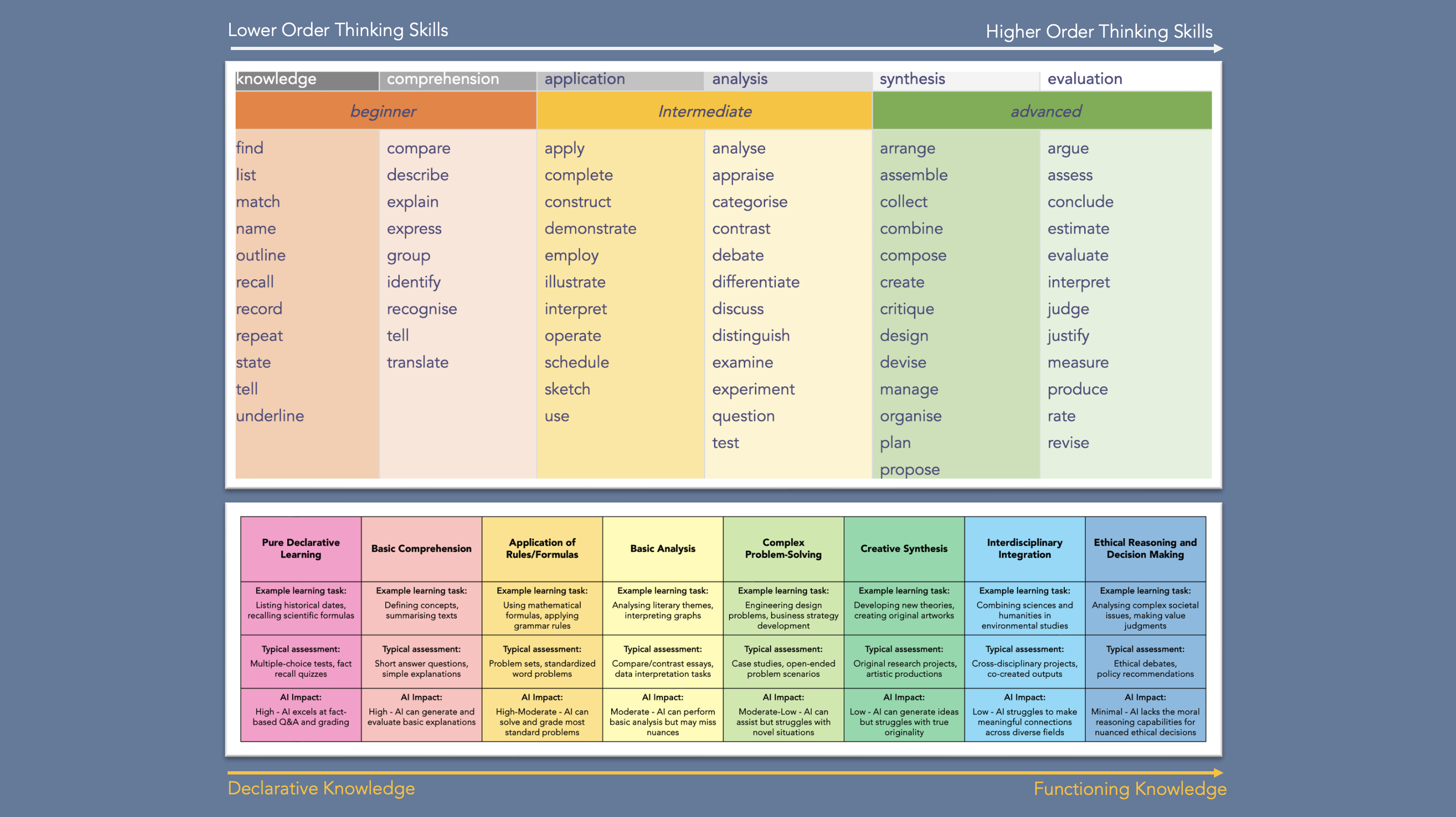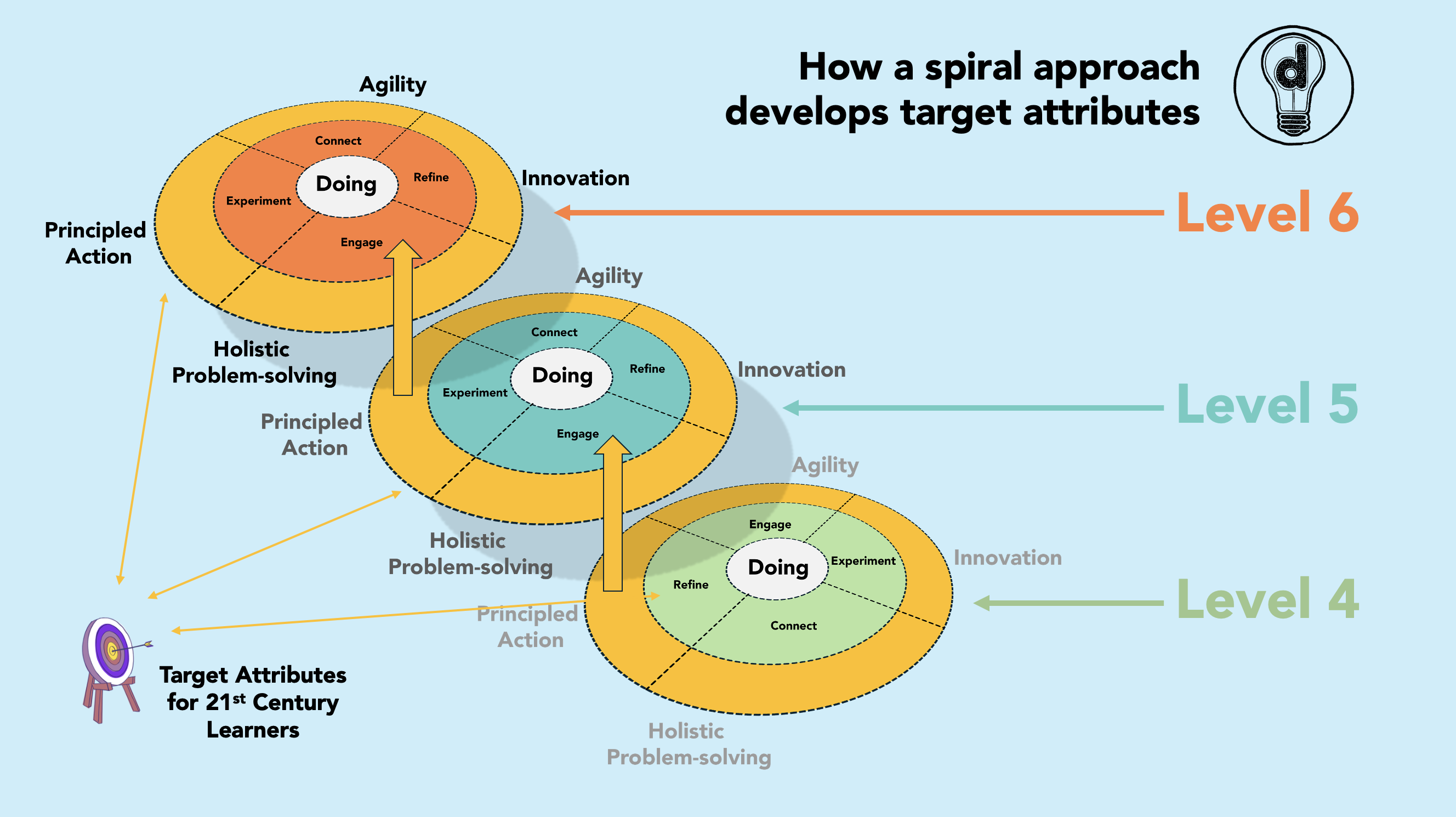When Phil from Ding said, ‘I’m fed up with talking about employability,’ we thought we’d better do something about how to close the skills gap.
So we put our heads together and took a long, hard look at the structural factors in course design that might inadvertently be producing the skills gap in higher education courses.
_
The problem with Bloom’s Taxonomy
I’ve long been a fan of Bloom’s Taxonomy because it’s a useful tool for helping people write better learning outcomes. But the more Phil and I looked at Bloom’s Taxonomy, the more we could see how it has created a problematic “left-to-right” progression in higher education.
This linear approach postpones the kind of ‘useful action’ that employers want until later stages of learning, creating an artificial separation between knowing and doing. The result? Graduates who struggle to adapt to workplace complexity despite having strong subject knowledge.
Bloom’s and declarative knowledge
To set up our critique of Bloom’s taxonomy, we aligned the table of verbs with the concepts of ‘declarative’ and ‘functioning’ knowledge. In a previous webinar about The Art of AI in Assessment, we considered how AI is forcing a shift away from assessing declarative knowledge because lower-level activities such as ‘listing’, ‘comparing’ and ‘describing’ are all easily automated by AI.
In doing this, we showed how higher-level skills such as ‘evaluating’, ‘producing’ and ‘collaborating’ are less likely to be compromised by students using AI to produce work. The outcome of this was the realisation that there is a structural problem in many university courses, where Level 4 prevents students from practicing and developing the skills that will underpin their future employability.
Identifying target attributes
We’ve done a lot of work with institutions around employability. And we’ve also been fortunate to have conversations with employability specialists such as Matt Dowling from The Freelancer Club, and legendary fashion designer Zandra Rhodes.
From these conversations, we’ve identified four attributes for 21st century learners. These attributes are made up of core employability skills and AI-resilient attributes that will prevent graduates from being automated out of their roles:
Agility
The capacity to swiftly adapt and navigate complex situations, comprised of adaptability and versatility.
Innovation
The ability to generate and implement original solutions, comprised of proactivity and creativity.
Holistic Problem-Solving
Integrating knowledge across disciplines, comprised of critical thinking and synthesis.
Principled Action
Making decisions guided by ethical considerations, comprised of accountability and ethical reasoning.
A curriculum design model for baking in employability
Having identified these four top-level attributes, we’ve attempted to bring them together in a spiral approach to learning design. This approach develops these attributes from day one through repeated practice, instead of postponing complex tasks until later in an undergraduate programme.
Now, if you know your learning theories you’ll probably recognise two key theories in this model: Kolb’s Cycle of Experiential Learning and Bruner’s Spiral Curriculum. These models have absolutely informed our thinking on the skills gap, and our model attempts to bring elements of both theories to advocate for immediate engagement with doing, followed by experimentation, connection, and refinement.
This creates a continuous cycle where learners develop professional capabilities through active engagement rather than passive absorption
‘Just do it’
The research we’ve done into closing the skills gap has revealed a clear message: ‘just do it’. A powerful key to success is the ability to do things in a principled and considered way, and to keep doing them.
The implications for higher education providers are significant. Rather than treating employability as an add-on service or final-year consideration, this approach integrates professional capability development throughout the curriculum. This addresses a core pain point for academic leaders: the need to close the skills gap while improving student satisfaction and engagement metrics, without adding more content to already packed curricula.
However, this isn’t simply about activity for activity’s sake. It’s about creating structured opportunities for learners to engage with complexity early and often, building confidence through supported risk-taking in safe environments.
We illustrated this through a practical example: rewriting traditional learning outcomes for a photography course. Instead of starting with “describe fundamental principles,” the spiral approach begins with “initiate a photography project using manual settings.” This shift creates immediately engaging learning experiences while developing core professional capabilities.
What next?
We concluded the webinar with a call to move beyond tinkering with existing systems. The skills gap persists not because of a lack of awareness, but because of structural issues in how we design learning experiences. Adopting a spiral approach that foregrounds doing is one way to create learning experiences that naturally develop the attributes employers seek while maintaining academic rigour.
Rethinking curriculum design along these lines has the potential to address many of the persistent problems in higher education including improve student outcomes and satisfaction, and closing the skills gap through structural rather than superficial change. Importantly, tThe approach doesn’t require additional resources or bolt-on services – instead, it positions the course as the engine of transformation by reimagining how existing learning experiences are designed and delivered.
If you’d like to explore how this approach could benefit your institution, we offer a programme review service that helps implement these principles in practice. We’re not tinkerers, we help you make changes that will really move the needle and deliver the outcomes you’re aiming for.
You might also like:
- The Art of Impact: How creative learning design can increase access and engagement
- Designing Learning for the Future of Work
- Positionality: Who are you, and how does it influence your learning design?
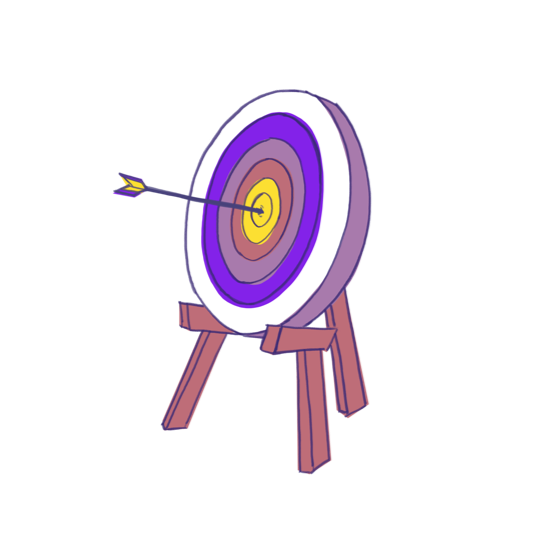
We're experts in end-to-end course development
Whether you need a new course, or more capacity to deliver existing courses, we’ve got you covered.
Our quick diagnostic tool will help you determine the type of engagement that would best fit your requirements

What sector are you interested in?

Edtech and Entrepreneurs

Higher Ed and Apprenticeships

